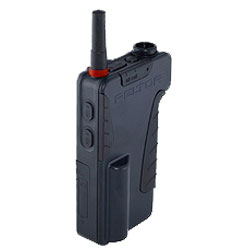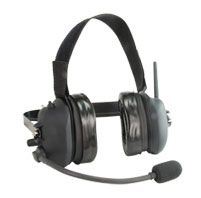The MOTOTRBO Technology Platform - TDMA
We’re now at the beginning of what will quickly become a large-scale migration to digital radio in
professional applications. At the same time, regulatory pressures combined with real-world operating
needs are driving radio manufacturers and users to communicate more information in a given slice of RF
spectrum, in other words, to increase spectrum efficiency. Channels that historically carried a single call at
a time are now being divided so they can carry two.
Two technologies exist to enable this “splitting” of channels, allowing multiple access on a single channel.
Frequency-Division Multiple-Access (FDMA) splits the channel into two narrower sub-channels that
can each carry separate calls. Time-Division Multiple-Access (TDMA) preserves the full channel width
but divides it into alternating time slots that can each carry an individual call. When it comes to further
increasing efficiency within 12.5 kHz channels, Motorola believes that two-slot 12.5 kHz TDMA is the best
technology for professional, business-critical applications.
FDMA uses a 12.5 kHz channel in half-duplex fashion,
and as a result, only one party can talk on the channel
at a time. To further increase the effective capacity
of an existing 12.5 kHz channel via FDMA, you would
have to slice the channel into two new and very
narrow 6.25 kHz sub-channels, requiring changes to
licensing requirements and making it unclear how the
technology will fit into and perform in today’s licensed
bands.
On the other hand, TDMA can be used to divide
a 12.5 kHz channel into two alternating time
slots. In this way, two-slot TDMA can provide
6.25 kHz equivalent efficiency in an existing
12.5 kHz channel with no changes to licensing
requirements. That means that TDMA can give
your customers two-for-one channel capacity,
doubling the efficiency of their licensed repeater
channels.
A Better Technology for the Professional Tier
The performance and flexibility of TDMA make it the only serious choice for professional two-way digital radio. Leveraging a TDMA platform, MOTOTRBO reduces overall equipment costs while supporting more users and more information in the same area and frequency. The spectrum efficiency gained with TDMA means that one digital repeater does the work of two analogue repeaters, for greater system efficiency, and lower acquisition and operating costs.
Two-Slot 12.5 kHz TDMA:
- Professional users can decrease their spectrum congestion while doubling efficiency of their licensed repeater channels. Two-slot TDMA allows two simultaneous conversations within a 12.5 kHz channel with a single repeater. One repeater can do the work of two, saving infrastructure acquisition, setup, and maintenance costs.
- MOTOTRBO’s two-slot TDMA technology supports both voice and data, so customers can flexibly determine whether a given timeslot is used for voice calls or data calls in a manner that best fits their needs. While some customers may elect to use both timeslots to double the number of voice users that can be supported on the repeater channel, others may want to equip their voice users with mobile data, messaging, or location tracking capabilities: in either case, the benefits are realised within the existing repeater channel.
- 12.5 kHz TDMA fits seamlessly into existing licensed channel structures in UHF and VHF: there is no need to obtain new licenses to obtain this increase in repeater capacity, and no added risk of interference with or from adjacent channels. The choice of 12.5 kHz TDMA digital technology makes it quick and easy to gain spectrum efficiency and improve your two-way radio communications.
- We now have a future-ready, standards- based solution. MOTOTRBO was designed to the European Telecommunications Standards Institute (ETSI) Digital Mobile Radio (DMR) Tier 2 standard, a globally recognised digital radio standard for professional applications in high power, licensed bands.








